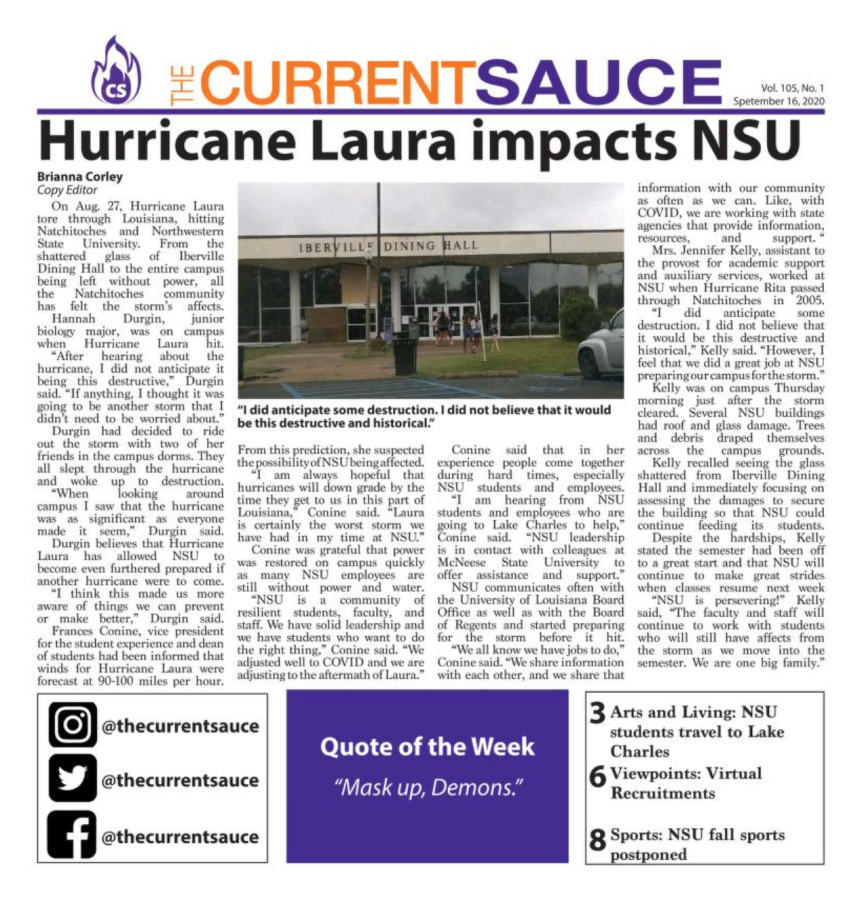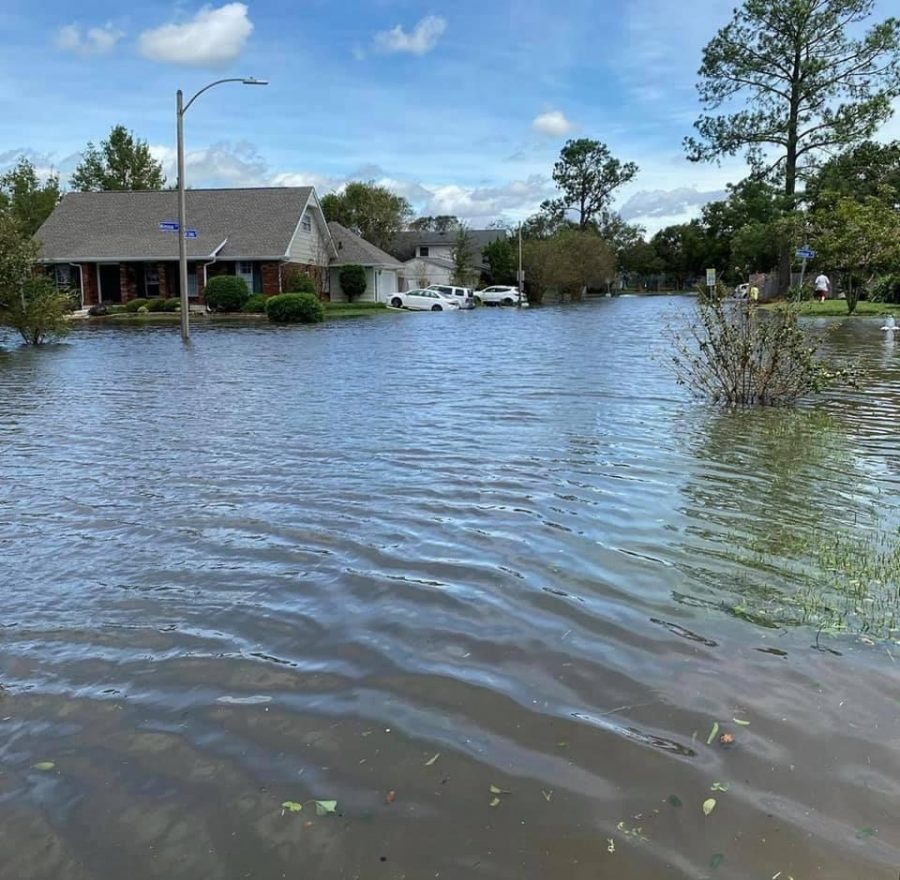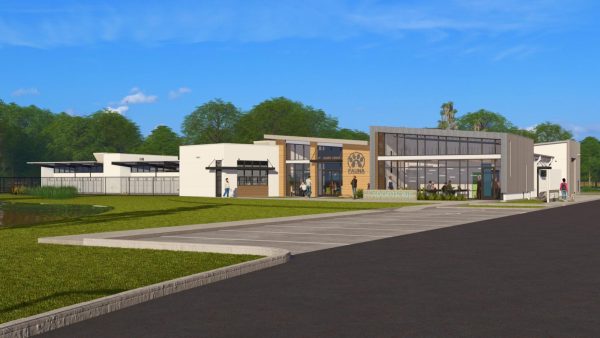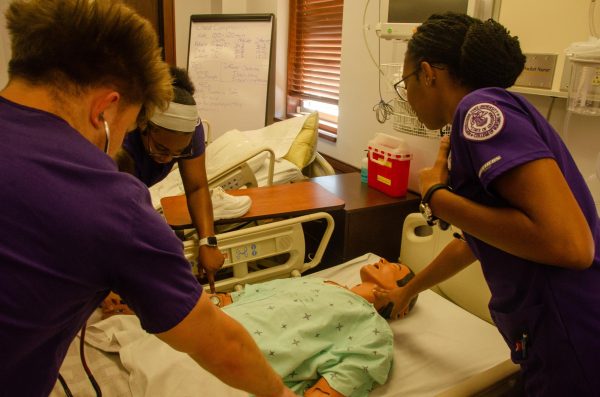Students return to NSU in the wake of Hurricane Ida
New Orleans after Hurricane Ida.
International headlines featured Louisiana after Hurricane Ida roared through parts of the state.
According to C. S. Ross, the hydrologist at the National Weather Service in Shreveport, Hurricane Ida came ashore at Port Fourchon, Louisiana on the morning of Aug. 29 and then moved further inland towards the New Orleans and Baton Rouge areas.
West Louisiana was left unscathed one year after Hurricane Laura and 16 years after Hurricane Katrina. The southern portion of the state was hit the hardest.
“Hurricane Katrina was devastating water wise, but Hurricane Ida was devastating wind wise,” Caylie Ezell, a sophomore veterinary technology major from Kenner, Louisiana, said.
Ezell said that from New Orleans up, the eastern part of Louisiana was torn though, though it is something her family has become accustomed to.
Ross reported that the highest wind speed of Hurricane Ida was the 172 mph wind gust at Port Fourchon, Louisiana.
Compared to the many hurricanes Louisiana has weathered in the past, Brylon Bergeron, a senior nursing major from New Orleans, Louisiana stated damage was at a mid-level.
Hurricane Ida crossed the Mississippi River between Gramercy, Lutchor and Reserve, Louisiana, then moved north between Walker and Denham Springs, Louisiana and continued moving north into Mississippi and then recurved heading into the north east of the country reported Ross.
“Some homes are completely destroyed,” Bergeron said about the New Orleans area. “A lot of debris, building damage and flooding depending on where you are in the city.”
Bergeron said that the power is still out in the New Orleans area and it could take weeks to get power back to some homes and to assess the damage of others.
Entergy reported on Monday, Sept. 6, around 7500 of their customers in New Orleans were living in the dark, without power for over a week.
Hurricane Ida was tracked moving into the New England and Pennsylvania area on Sept. 1 reported Ross.
The hurricane ripped through New York and New Jersey, causing numerous deaths due to intense flooding, according to AP. Joe Biden visited the northern states to survey the damage on Tuesday, Sept. 7.


























